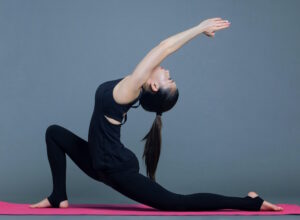
Pilates and yoga are two popular forms of mind-body exercise that offer numerous benefits for physical and mental well-being. While they share some similarities, such as focusing on breath, alignment, and mindful movement, there are distinct differences between Pilates and yoga. In this article, we will explore the main differences between these two practices, including their approaches, benefits, similarities, and how they differ from traditional exercise.
What are the main differences between Pilates and yoga?
Pilates and yoga differ in their origins, principles, and primary focus. Pilates was developed by Joseph Pilates in the early 20th century and focuses on strengthening the core, improving posture, and enhancing overall body strength and flexibility. Yoga, on the other hand, has ancient roots and encompasses a wide range of styles, each with its own focus, such as strength, flexibility, meditation, or spirituality.
In terms of movement, Pilates exercises often involve controlled, precise movements performed on specialized equipment or mats, while yoga encompasses a variety of postures, flows, and sequences that can be gentle or dynamic. Pilates emphasizes engaging the deep core muscles, while yoga focuses on cultivating flexibility, balance, and alignment.
What is the difference between yoga and Pilates benefits?
The benefits of yoga and Pilates overlap in some areas but also have distinct differences. Yoga is known for its ability to improve flexibility, balance, and posture, while promoting relaxation, stress reduction, and mental clarity. It offers a holistic approach to well-being, combining physical, mental, and spiritual aspects.
Pilates, on the other hand, emphasizes core strength, stability, and body awareness. It can enhance muscular strength, endurance, and overall body tone, particularly in the core, back, and hips. Pilates can also improve posture, alignment, and coordination, making it beneficial for injury prevention and rehabilitation.
While both practices offer mind-body connection and stress reduction, yoga tends to have a stronger focus on mindfulness, meditation, and spiritual growth, whereas Pilates is more oriented toward physical conditioning and body mechanics.
What is the similarity between yoga and Pilates?
Despite their differences, yoga and Pilates share some commonalities. Both practices emphasize proper breathing techniques to facilitate movement and enhance mindfulness. They promote body awareness, concentration, and a connection between the mind and body.
Yoga and Pilates can also help improve flexibility, strength, and balance. Both practices offer modifications and variations to accommodate different levels of fitness and physical abilities. They can be practiced by people of all ages and backgrounds, and both have a non-competitive and inclusive approach, encouraging individuals to work at their own pace and listen to their bodies.
What is the difference between Pilates and exercise?
Pilates differs from traditional exercise in several ways. While exercise often focuses on repetitive movements and high-intensity workouts, Pilates emphasizes controlled and precise movements with an emphasis on quality rather than quantity. It promotes efficient movement patterns, body alignment, and functional fitness.
Unlike many exercises that isolate specific muscles, Pilates aims to integrate the whole body, with a particular focus on the core. It emphasizes the use of breath, proper alignment, and engaging the deep stabilizing muscles.
Additionally, Pilates is often performed with specialized equipment, such as reformers, chairs, or Cadillacs, which provide resistance and assistance. This equipment allows for a wide range of exercises and variations, enhancing the effectiveness and versatility of Pilates workouts.
Pilates and yoga have distinct differences in their origins, approaches, and primary focuses. Pilates emphasizes core strength, posture, and body conditioning, while yoga encompasses a broader range of styles with a focus on flexibility, balance, and mindfulness. Both practices offer numerous benefits for physical and mental well-being, but their specific benefits and areas of focus differ. They share similarities in terms of mind-body connection, breath work, and inclusiveness. Compared to traditional exercise, Pilates stands out with its emphasis on precision, core integration, and specialized equipment. Understanding the differences between Pilates, yoga, and traditional exercise can help individuals choose the practice that aligns best with their goals and preferences.